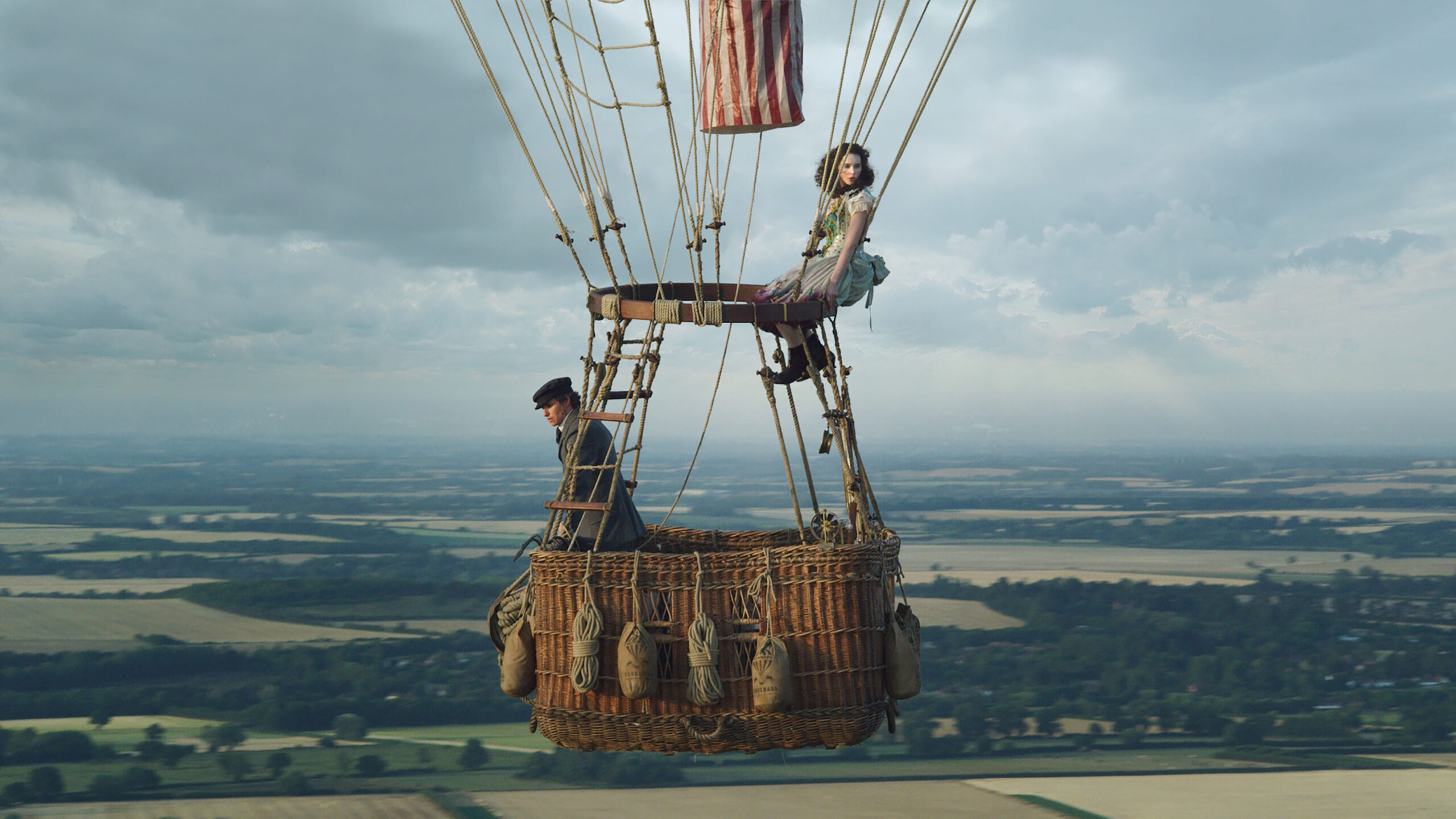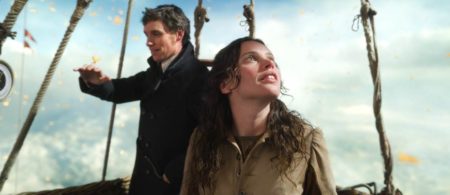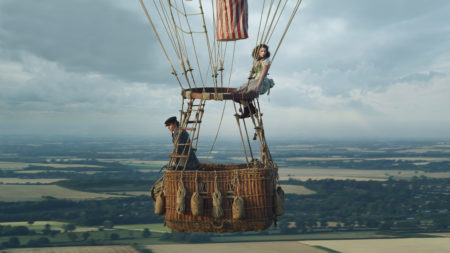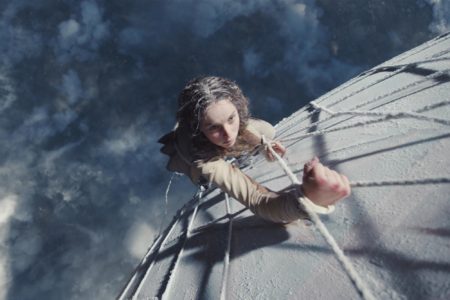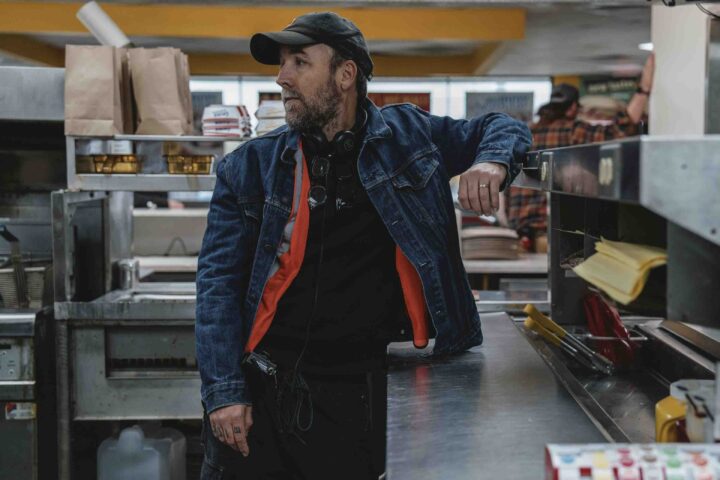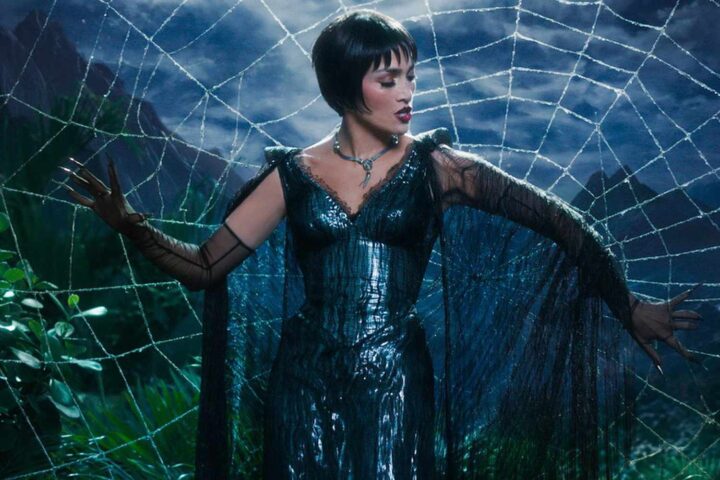Filmmaker Tom Harper on Flying High with The Aeronauts’ Felicity Jones and Eddie Redmayne
Filmmaker Tom Harper is having quite a year, first with Wild Rose, about a Glasgow ex-con nursing a dream of becoming a Nashville country star, and now his new picture The Aeronauts, which reunites The Theory of Everything stars Felicity Jones and Eddie Redmayne as intrepid adventurers circa 1962 London determined to break a gas balloon altitude record.
The Aeronauts, a real life, and real-time, record of the ascent between aspiring meteorologist James Glaisher (Redmayne) and balloonist Amelia Wren (Felicity Jones, playing a character based on noted balloonist Sophie Blanchard), charts the pair’s evolving relationship and mutual dependency for not just record-breaking, but survival. As expected, the two stars again do well together onscreen, Jones particularly displaying great heart and strength in an obviously challenging role.
Harper, a veteran of short films and television (Peaky Blinders), charted a daunting filmmaking task in recreating the pair’s daring balloon voyage, shooting vast, aerial exteriors around the world as well as studio set intimacy, providing large and small canvas drama.
I recently caught up with the energetic, 39-year-old filmmaker to chat about the special approach to crafting his new adventure. And of course, a bit about his little seen gem from earlier this movie year.
Let’s start with Felicity Jones. Each time I see her in a film I am impressed with her combination of technique and feeling. And this is not a slight on Eddie at all because he is as good here as always, but I think this movie belongs to her in a way, particularly the final third of it. I think she is the real hero of the story. I also loved the way she was photographed also in the later scenes where she is covered in ice. Tell me a little bit about pulling that physical performance out of her.
Right from the very beginning, she was clear about what to do and she just went for it. It was very much about doing her own action scenes as much as she could. She trained very hard physically for about six months before we shot, building up a core strength in the gym and doing aerial acrobatics. She was always adamant that she would do it. She does 90% of that stunt work. The only things that she did not do were climbing up the side of the balloon at 3000 feet over the English countryside and some of the stuff when we did the crash landing. Pretty much other than that it is all her. That speaks to several different levels, from her determination in climbing up the side of the balloon in the studio to being in a frozen room, below freezing, putting her hands into a bucket of ice, and putting herself through it.
We also found a level to which we could push her, and she would be pushed to, where she would still feel comfortable being able to perform. For example, getting onto that bar and hanging upside down and getting in the basket. It was incredibly tough, and I took her to the edge of her endurance, I think, and she pushed herself to get to that point, putting herself in a very vulnerable place.
Also, there is something that I find emotional and incredibly powerful and brilliant in the scene where she thinks he has died. It is sort of counterintuitive to what you would expect or imagine, which is when she thinks he is dead, and she does not cry.
Someone said the other day the great actors try to hold back the tears; they try not to do it. Sometimes actors will just do it because they can, but I felt in this performance that she was holding it in until it could not be held anymore.
That’s actually really good and it’s the truth in life—you try not to cry. So yes, when Eddie’s character comes back to—that’s when then the emotion comes. She’s at her most vulnerable when he goes up and takes the measurements, and I think that is what you’re talking about when you said she is frozen; he can’t even see her. There’s a relief there and that is where the emotion comes. I think that’s representative of what her character chose to put herself through. She was there for that. Only at a point where everything was all right does she show that emotion. That is true to life. You don’t have an emotional moment when you are forced into fight or flight to get something done or save someone. At that moment it is about adrenaline and getting the job done. Only when you are okay do you suddenly have that moment where you could let go.
I saw the film a second time and found myself looking forward to the sequence where she climbs atop the balloon, which is spectacularly exciting. I understand you shot that on three levels, correct? There was the shooting at 37,000 feet to capture the vista, right? And then what the stunt person did at about 3,000 feet, and then what Felicity did in the studio. It’s a seamless sequence and I was surprised to learn that it was not done via CGI with a digital sky.
Yes, that approach is basically throughout the whole of the film; it is the melding of those three things. Some of the stuff we did for real with the cast and some with the balloon, which we sent up high and shot with a helicopter. We did lots of filming—basically cloud chasing—around the world, in New Orleans, South Africa in the U.K., which formed the basis of all our backgrounds. Sometimes we had to add to them, but it was always the starting point. And then there is the stuff we did in a big blue screen studio, where we had our whole balloon and sections of the balloon as well. So the scene where she climbs atop it is a combination of, exactly as you say, those three things. For that climb, we had different sections of the balloon. As the studio was not tall enough, we could not get the whole balloon into a single studio, so we had the first third, the middle section and then the crown. So for Felicity’s climb, she climbed up the rigging and then you see her climb up the next side of it and then you see the top. That may sound like a lesser achievement, but these pieces are massive. Even the side pieces were about four or five times as high as the room that we are in right now. And she’s climbing it, repeatedly, and falling backwards again. It was an immense physical challenge.
In that sequence there is a quite effective edit from the moment you describe to one far below, with Amelia’s mother and sister. And then we go back to the scene above and I believe there is a long shot where she is hanging from the side of the balloon, everything still and quiet.
Yes. Thank you!
You read the book that inspired the film and I’ve heard that the ballooning in the book was not that exciting to you, at least on first read.
No, there were incredibly exciting balloon sequences, but they all came from different flights. So, for example, the storm did happen, but the flight that caught my my attention was the one where they went to the 6000 feet, and this was for two reasons—first, because it was higher than anyone had been before or since in a balloon without a pressurized container and second, because it was James Glaisher’s flight, and I have always been interested in the weather. I was interested in his story, that of a pioneering meteorologist. But they did not really talk on that flight because he was taking measurements for the whole time. That doesn’t make for the greatest drama!
So that led me to look at other flights, partly because there were these other incredible moments of action and discovery—the butterflies, the parachute; all of that happened. And partly because since we were going to combine some flights, there were other characters that were really fascinating, including Sophie Blanchard, whom Amelia Wren is based on, this amazing firecracker of a woman who had lived previously, and she was an acrobat, did night flights and was Napoleon’s head of aeronautics. So I thought if I put her in the basket with him you would have this great tension because they are such different characters.
The movie employs an almost real-time structure, and quite a bit is accomplished physically and emotionally as they move between altitudes and are struck by the weather conditions and changes. Narratively, there is significant backstory in a very concentrated period of time, so you are covering much ground. Also, you begin the film almost as if it’s an action film. The carriage is moving quickly, and then they are suddenly up in the air. We get to know them as time goes on during the trip. It could have been written as a linear story with a climactic flight sequence.
Thank you. Yes. I loved the idea that the film was in real time and it is, from the start to the end as each moment happens, exactly as the flight unfolds. I thought that was an unusual structure that I had not really seen before and it appealed to me and sort of worked. You are thrust into this journey with the characters as you go along you get to know them, and hopefully by the time that she climbs you are right there and are brought up to date, and then you are left with this real-time descent. Because balloon flights tend to be about 90 minutes, and this one was 96 minutes or whatever it was, I thought, ‘Well that is perfect.’ So it came from the challenge of whether we could tell the story in real time and what that looked like.
You can’t always get lucky with actors working together like that.
Yes (laughs).
We all loved their last collaboration. I’d like to hear a little bit about what you thought of pairing them again.
I just knew they had great chemistry and the thought of seeing them together again was really exciting. We initially thought it might be a problem because they may not want to work with each other again and that maybe we should not offer it to them. But then we thought we should offer it to the best people for the parts! In practice, it was a really lovely thing, because they like each other, and it would not have been good to put two actors together in a basket for the whole movie if they hated each other! It would’ve been a disaster! They dared each other, pushing each other further and inspiring each other to take risks. Getting to work with those two was a really lovely thing.
Wild Rose is near the top of my favorite movies of the year. I thought it was such an ingenious movie and that Jessie Buckley was wonderful, as was Julie Walters. Of course, it is completely different from The Aeronauts, stylistically and otherwise, as one is a small indie and the other is a fantastical, writ large adventure. Tell me something about Wild Rose.
Thank you so much. It is, of course, very different from The Aeronauts, but there are some things I see that are the same. Both, despite their challenges, have a belief in humanity and a reason to be optimistic and have that outlook, and have a warmth to them. Even though they are different, they begin with interesting characters. Rose-Lynn Harlan is an unbelievable character that just takes you on a real journey. She is a firecracker of a woman who takes you on a ride with her, and while not everything she does is always likable and you don’t always agree with her, you empathize with her. She is such a whirlwind character that you want to go with her on that journey. I think that because she puts you through it, it is all the more rewarding when you come to the end and she finds that resolution of bringing together her responsibilities and her dreams; they merge. It is because it’s so hard that it makes it so rewarding. If it was easy, it would be nothing.
